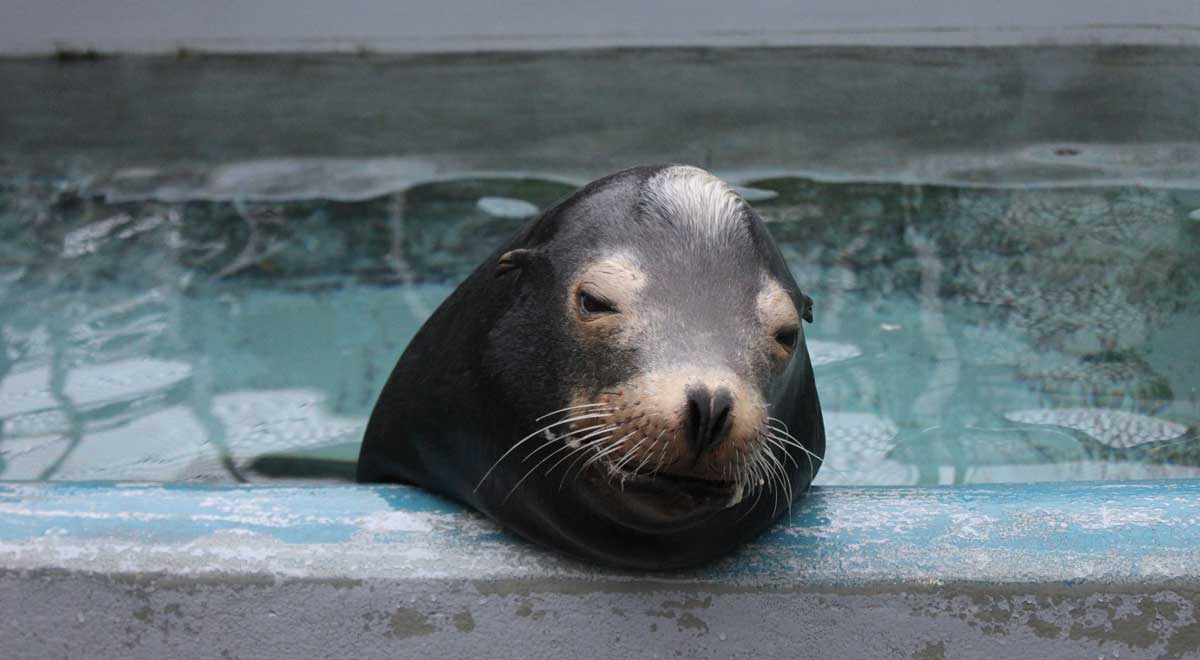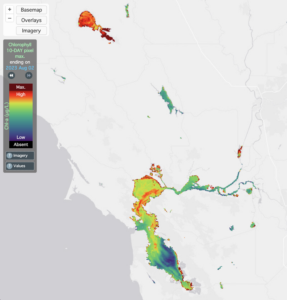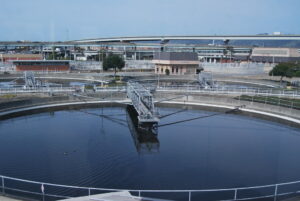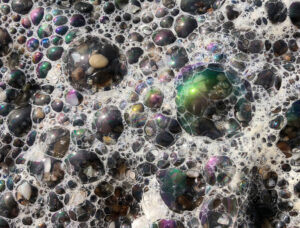The delay in opening California’s crab fisheries because of a toxin called domoic acid has made headlines lately. But for marine biologists, alarm over the summertime growth of Pseudo-nitzschia, the single-celled algae producing the toxin, started long ago.
Seasonal explosions of ocean algae have been observed throughout human history. Most of the time they go unnoticed, said William Cochlan, a marine ecologist at San Francisco State’s Romberg Tiburon Center. But some algae can produce toxic byproducts, and if those species manage to outcompete others, they may form massive harmful blooms that can poison the food chain.
The species making headlines now was first identified as dangerous in 1987, when more than 100 people fell ill on Canada’s Prince Edward Island after eating blue mussels. Pathology papers on the outbreak tell a grim story. First came nausea, vomiting and confusion, and then, in severe cases, cardiac arrhythmias, seizures and coma. Four people died, and their autopsies revealed severe brain damage. Many who survived struggled to form new memories.
The affliction was dubbed “Amnesic Shellfish Poisoning,” and researchers soon identified a culprit: a genus of diatoms called Pseudo-nitzschia. That summer, it had bloomed invisibly off the Atlantic island and produced large amounts of a neurotoxin called domoic acid, which built up in the meat of the filter-feeding mussels.
Cochlan was then a marine biology doctoral student at the University of British Columbia, studying under an expert on harmful algae. Cochlan’s been fascinated by Pseudo-nitzschia ever since. Over the next several decades, he and other scientists discovered the diatom’s range wasn’t limited to the Atlantic. “Once we started looking for it,” he said, “we quickly found these species do really well off California.”

In recent years, the plankton have flourished. It’s not unusual to see spikes in the algae along the West Coast in late spring, Cochlan said. In May 2014, “we were measuring screaming hot Pseudo-nitzschia right across from Carmel and up to the Oregon border,” Cochlan said.
But the bloom didn’t extend past the summer or affect major fisheries, so it got little attention. The staff at The Marine Mammal Center in Sausalito noticed, though. In 2014, 233 sea lions were brought to the facility with domoic acid poisoning, more than triple the number the year before, said Claire Simeone, a conservation veterinarian at the center. “What we’ve seen is these blooms are becoming more frequent,” Simeone said. “We are seeing patients come into our hospital year-round affected with this toxin.”
Then came 2015.
“This was an unprecedented bloom, because it lasted so long and it had such a huge spatial spread,” Cochlan said.
Dr. Raphael Kudela, a professor of ocean ecology at the University of California Santa Cruz, conducts ongoing Pseudo-nitzschia studies in Monterey Bay. His team’s underwater biosensors picked up evidence of a bloom in the spring. In late May, Kudela’s lab tested anchovies found floating dead in the bay, and found domoic acid levels so high they immediately informed state health officials. The state confirmed his team’s findings, shut down the local anchovy fishery and later issued warnings about high levels in other species that feed on plankton, including razor clams and mussels.
Samples taken during an early summer fisheries study by the National Oceanic and Atmospheric Administration revealed that an especially toxic species, Pseudo-nitzschia australis, was blooming all the way up the coast. And while it waxed and waned as the summer wore on, Kudela said the bloom didn’t dissipate, as normally happens after a few weeks. “It was unusual based on everything we’ve measured in the past and what’s available in the literature,” he said. “It was unusual based on everything we’ve measured in the past and what’s available in the literature.”
The reasons for the massive growth, and its persistence, aren’t clear. Researchers agree that the unprecedented warming of the eastern Pacific this year is partly to blame, as Pseudo-nitzschia australis thrives in slightly warmer water. But Kudela said there are other factors at play. Pseudo-nitzschia won’t produce domoic acid unless it’s stressed, for instance starved of certain metals or exposed to urea, he said. Some poorly understood combination of factors created a “Goldilocks” summer for the species, he said, a “just right” middle path that allowed it to proliferate, but kept it unhappy. “We’ve had the right conditions to let it grow, but also to make it toxic,” Kudela said.
The same set of factors has spelled doom for many more marine mammals this year. As of September, another 213 sea lions sick with domoic acid poisoning have been taken to The Marine Mammal Center, and 80 percent of them have died, Simeone said. The center made the first diagnosis of toxicity in endangered Guadalupe fur seals this year, she said. Both species were already seeing losses, as the unusually warm waters have disrupted seal mothers’ food supplies, resulting in abandoned and starved pups. “We’re seeing these far-reaching, ecosystem-wide effects, not just in sea lions and fur seals, but also dolphins and whales,” Simeone said.
In July, the first sea otter spotted in San Francisco Bay since 2011 was found dead, and a pathologist from the California Department of Fish and Wildlife found domoic acid in the animal’s urine and brain hemorrhaging likely caused by the toxin. Photos had shown the otter, a federally threatened species, feeding on mussels in Richardson Bay.
The California Department of Public Health’s latest warnings about crabs indicate just how toxic the food web has become. The acceptable threshold for domoic acid in crab viscera is 30 parts per million. Officials said samples collected and analyzed early this month show levels of 140 parts per million. The toxin is water-soluble, so it can flush out of an animal’s system quite quickly, Kudela said. But while the bloom is diminishing now that waters are cooling, Kudela said tests show marine sediments are still full of domoic acid, which means crabs and other bottom-dwellers may continue to take it in. It’s hard to say how long effects will linger, he said, in part because researchers don’t fully understand how various species process the toxin.
Next year may not bring relief, Kudela warned. If the El Niño this winter leads to the first big rains in California in years, nutrient runoff could contribute to more algae.
“It could be as big or possibly bigger than it was this year,” he said.
Kudela and Cochlan both said there are blind spots in scientists’ understanding of Pseudo-nitzschia, and funding for research on harmful algal blooms is scarce. If there’s any upside to the potentially devastating fisheries closures, they said, it may be that the issues they’ve been studying for decades are getting more attention.
In his lab at the Romberg Tiburon Center, Cochlan is culturing the toxic algae at different temperatures while tweaking variables like pH and light levels, trying to nail down its optimal conditions. Such basic experiments are critical to understanding how Pseudo-nitzschia outcompetes benign competitors, he said, but he’s running them with no new state or federal funding. “We can never hope to react to these things and mitigate them if we don’t understand them,” he said.





